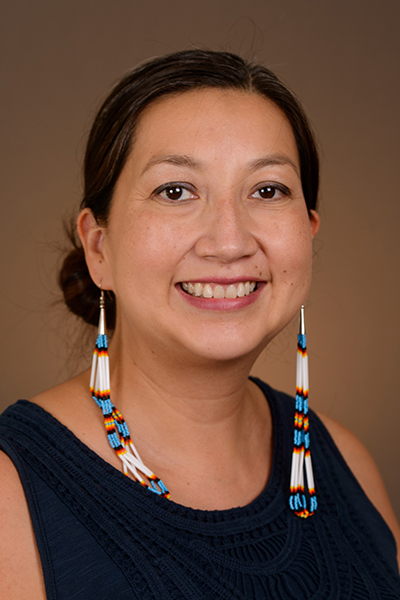
Lakota professor will tackle wastewater pollution, mentor minority populations
After five years at the University of Utah, Otakuye Conroy-Ben has returned to Arizona — the state where she became the first Lakota in history to earn a doctorate in engineering.
As an assistant professor of civil, environmental and sustainable engineering her research interests surround water and wastewater treatment and reuse — ranging from understanding what pollutants exist in wastewater, what adverse effects they have and why they sometimes survive treatment efforts.
Conroy-Ben (whose first name is pronounced “Oh-TOCK-oo-yay”) earned two master’s degrees and a Ph.D. from the University of Arizona, where her doctoral research focused on studying endocrine changes caused by human hormones in wastewater. She also earned a bachelor’s degree in chemistry from the University of Notre Dame.
After her doctoral studies she worked as a project engineer at the Sanitation Districts of Los Angeles County, where she studied odor control in wastewater treatment systems.
She returned to academia with a postdoctoral co-appointment at the University of Arizona where she studied metal and drug-resistant bacteria.
In 2009, she was a research fellow at the National Congress of American Indians where she evaluated climate and renewable energy policy and adaptation affecting tribal nations.
Advancing research in wastewater pollutants
As a faculty member in the Ira A. Fulton Schools of Engineering at Arizona State University, her research includes quantifying organic pollutants found in sewage and wastewater impacted water that have been proven to have adverse effects on animals, including the feminization of male fish. Disturbingly, sometimes these pollutants (a new class of androgens that her team discovered) have been detected at low levels in drinking water, said Conroy-Ben.
Another project focused on understanding a specific community’s drug usage or abuse trends by using sewage as a dilute urine sample.
Focused on Salt Lake County, she was able to identify that prescription pain medications were more prevalent in affluent suburbs, while methamphetamine abuse was inversely proportional to neighborhoods where the population lacks educational training.
Conroy-Ben aims to build on these efforts by starting a research lab at ASU that allows certified work with bacteria and controlled substances.
Mentoring minority populations
Conroy-Ben has a passion for working with Native American and female students to build their presence in engineering.
“In addition to an excellent environmental engineering program and faculty, I came to ASU because of the opportunities to work with under-represented students in STEM,” she said
She was born on the Pine Ridge Indian Reservation in South Dakota.
In high school a physics teacher exposed her to the American Indian Science and Engineering Society (AISES), which helped her to channel her prowess in mathematics toward engineering.
Decades after her interest was sparked as a bright Lakota teen she found herself an Officer on AISES’ Board of Directors.
“Female faculty and faculty of color in STEM are severely lacking at institutions of higher education across the country,” said Conroy-Ben.
While an undergraduate at the University of Notre Dame she did not encounter a single female or minority faculty member in her science curriculum and had no female faculty members in her environmental engineering doctoral program.
Conroy-Ben found her way to academic success regardless, but she says working with a female or minority mentor would have made the path to success easier.
“I want to continue to mentor students who want an excellent research experience and are willing to work hard,” said Conroy-Ben.
She is married to Colin Ben, a researcher in ASU’s Center for Indian Education and a doctoral student in Educational Leadership and Policy at the University of Utah.
As the mother of two girls, one just a month old, Conroy-Ben said she finds herself balancing her research agenda with motherhood both happily and busily.
Media Contact
Rose Serago, [email protected]
Ira A. Fulton Schools of Engineering




































